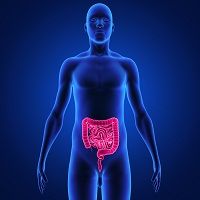Article
Rome IV Criteria Get Specific about Functional Gastroduodenal Disorders
Author(s):
Rome IV updates include more specific definitions and diagnostic criteria for functional gastroduodenal disorders such as functional dyspepsia, belching disorders, and nausea and vomiting disorders.

“Symptoms that can be attributed to the gastroduodenal region represent one of the main subgroups of functional gastrointestinal disorders affecting about 20% of the world’s population,” said Nicholas Talley, MD, PhD, of the University of Newcastle, Australia, at a presentation at Digestive Disease Week 2016, a joint meeting of the American Academy for the Study of Liver Diseases (AASLD), American Gastroenterological Association (AGA), the American Society for Gastrointestinal Endoscopy (ASGE), and the Society for Surgery of the Alimentary Tract (SSAT).
Talley provided an overview of the slightly modified four categories of gastroduodenal disorders. First, functional dyspepsia, which affects an estimated 10% to 30% of people worldwide, is characterized by one or more the following: postprandial fullness, early satiation, epigastric pain, and epigastric burning, which are unexplained after a routine clinical evaluation. The functional dyspepsia category includes two subcategories: postprandial distress syndrome (PDS) characterized by meal-induced dyspeptic symptoms, and epigastric pain syndrome (EPS) that does not occur exclusively postprandially.
The updates to the Rome IV criteria for functional dyspepsia were designed to improve the specificity of definitions. “The emphasis is now on PDS and EPS, not on larger functional disorders. Furthermore, these two subgroups are not mutually exclusive; there can be overlap,” he said. He cautioned physicians to not confuse functional dyspepsia with gastroparesis and also discussed how many cases of functional dyspepsia are now mislabeled as gastroesophageal reflux disease (GERD). Talley also briefly presented convincing data that suggest that GERD and irritable bowel syndrome (IBS) may be part of a larger spectrum of functional gastrointestinal disorders.
Second, he provided an overview of belching disorders, which are defined as audible escapes of air from the esophagus or the stomach into the pharynx. While belching is a common occurrence, for some patients, it can become excessive and troublesome. In the previous Rome III criteria, the term “aerophagia” (air swallowing) was used, but this term has been dropped in the new criteria because studies have shown that different mechanisms of excessive belching occur. Now, belching disorders are subcategorized as either gastric or supragastric belching, on the basis of the origin of the refluxed gas, as detected by intraluminal impedance measurement.
Next, he discussed the nausea and vomiting disorders. “The term functional vomiting has been dumped,” he said. “The term is pejorative, and no one uses it.” Previously, separate nausea and vomiting sections were provided. In the new criteria, the separate sections have been merged into a single entity called CNVS, for chronic nausea and vomiting syndrome. He noted that chronic nausea can present without vomiting, and vomiting in the absence of nausea might be indicative of organic central nervous system disease, and finally, that nausea may be related or unrelated to meals.
A few minor changes were made to the criteria for cyclic vomiting syndrome (CVS) to reflect the observation that some patients report inter-episodic symptoms other than vomiting. The term CHS, or cannabinoid hyperemesis syndrome, has been added because this disorder is distinct from CVS and exhibits different epidemiology and has specific bathing behavior and therapy.
Finally, he covered rumination syndrome, which is characterized by the repetitive, effortless regurgitation of recently ingested food into the mouth followed by re-chewing and re-swallowing or expulsion of the food bolus. Although the criteria for rumination were essentially unchanged, the new criteria emphasize effortless regurgitation as a major diagnostic key and caution against misdiagnosis as GERD.
“Overall, specific frequency criteria have been added, the symptoms must be bothersome, clearer symptom definitions are required, and an emphasis has been placed on PDS and EPS,” he concluded.





